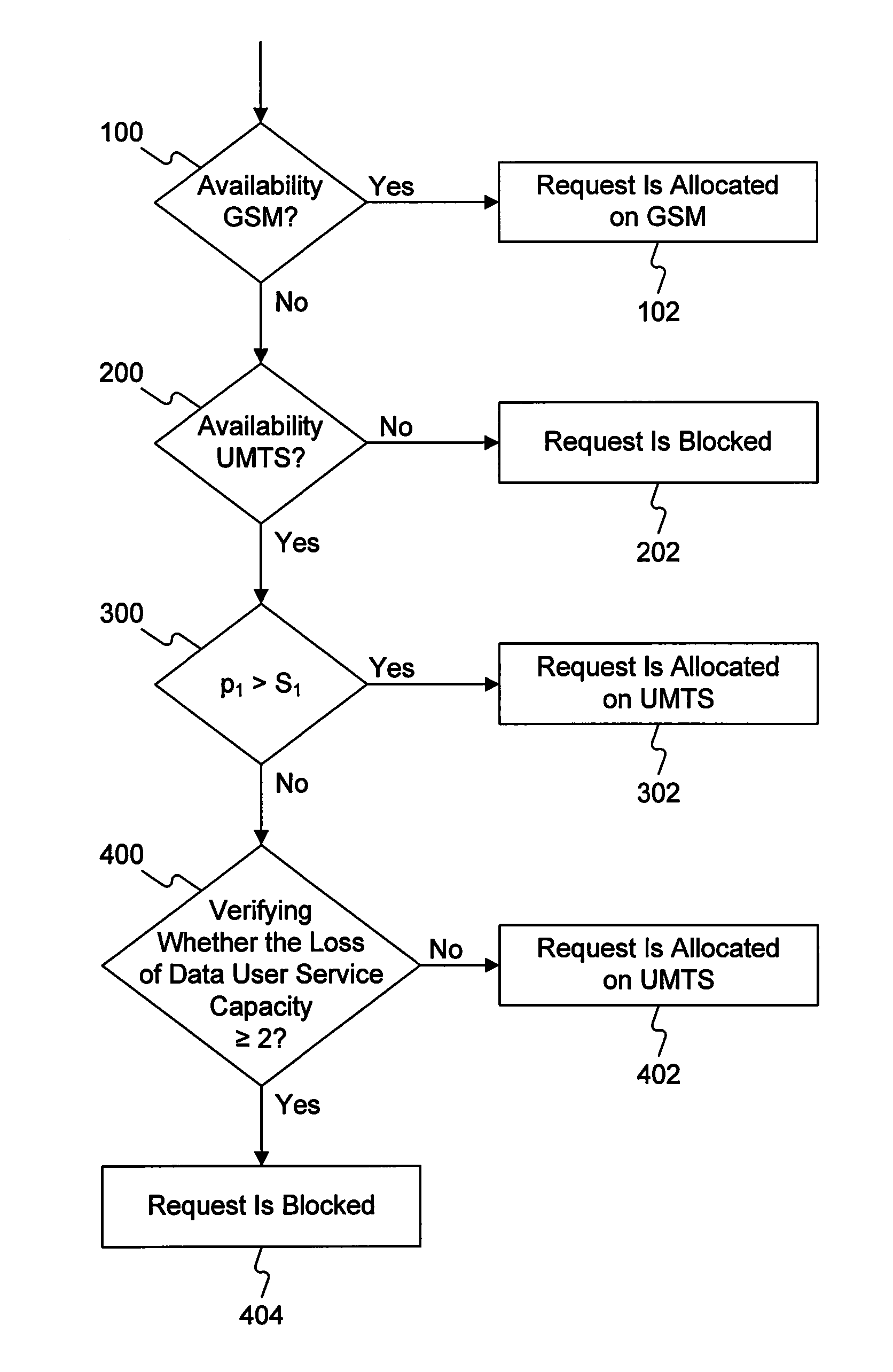Method and system for service allocation in communication networks, related network and computer program product therefor
a technology of communication network and service allocation, applied in the field of communication network service allocation, can solve the problems of limited wireless lan system and unfavorable choice, and achieve the effect of less efficient and better overall exploitation of radio resources
- Summary
- Abstract
- Description
- Claims
- Application Information
AI Technical Summary
Benefits of technology
Problems solved by technology
Method used
Image
Examples
Embodiment Construction
[0058]The solution described herein refers to the management of the radio resources used in mobile radio networks. The described solution is therefore designed to be implemented within the network apparatuses tasked with the management and control of the radio resources of the cells comprising the network during the normal operation of the system.
[0059]A possible scenario of application of the solution described herein is illustrated in FIG. 1, which shows a region of territory, designated by the reference 10, served through a mobile radio network GSM, and a sub-set of said region, designated by the reference 20, also served by the UMTS network (the area covered by the segment for accessing the UMTS segment will mostly coincide with that of the GSM system). Also considered is the presence of an additional restricted area of territory, designated by the reference 30, in which the services are offered through Wireless LAN systems.
[0060]In cases of practical interest, the WLAN area is ...
PUM
 Login to View More
Login to View More Abstract
Description
Claims
Application Information
 Login to View More
Login to View More - R&D
- Intellectual Property
- Life Sciences
- Materials
- Tech Scout
- Unparalleled Data Quality
- Higher Quality Content
- 60% Fewer Hallucinations
Browse by: Latest US Patents, China's latest patents, Technical Efficacy Thesaurus, Application Domain, Technology Topic, Popular Technical Reports.
© 2025 PatSnap. All rights reserved.Legal|Privacy policy|Modern Slavery Act Transparency Statement|Sitemap|About US| Contact US: help@patsnap.com



